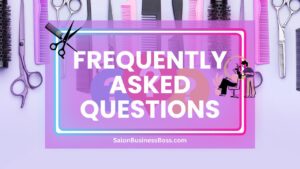Ever wondered about the costs behind your favorite hair salon? Let’s break it down into simple terms to understand what it takes to keep those hairdryers buzzing.
The cost of running a hair salon varies widely depending on location, size, services offered, and other factors. On average, it can range from $20,000 to $100,000 annually, covering rent, utilities, supplies, and staff wages. Detailed financial planning is essential for accurate budgeting.
I. Setting the Scene: Location Matters

Choosing the right location is like finding the perfect hairstyle—it sets the tone for everything. The cost of real estate can vary dramatically. A small town space may have a rent of around $1,000 per month, while prime spots in bustling cities could skyrocket to $5,000 or more. So, your choice of location isn’t just about aesthetics; it’s about balancing your budget.
Size and style further shape your financial canvas. A cozy boutique salon might cost less to rent and maintain, around $20,000 to $50,000 annually, compared to a larger, more high-end establishment that can demand a budget ranging from $50,000 to $100,000.
Read more about: Market Trends of Beauty Salon: Embracing Innovation and Change
II. The Nuts and Bolts: Rent and Utilities
Rent isn’t just a monthly expense; it’s the heartbeat of your salon. On average, commercial rents can range from $15 to $40 per square foot. For a cozy 500-square-foot space, that’s $7,500 to $20,000 annually in rent alone. Utilities, including water, electricity, and internet, add another $300 to $500 per month, totaling around $3,600 to $6,000 annually.
Now, let’s talk supplies. Beyond the basics like scissors and shampoo, you’ll need towels, capes, styling products, and furniture. These can add up to $5,000 to $10,000 annually, depending on your salon’s size and services.
III. Human Touch: Staff Salaries and Benefits
Your salon is as good as the team behind it. Staff salaries can vary widely. Experienced stylists may command higher pay, ranging from $30,000 to $60,000 annually. Receptionists and assistants might fall in the $20,000 to $30,000 range. Don’t forget about benefits—health insurance, retirement contributions, and vacation pay can add 20-30% to salary costs.
Investing in your team through training is crucial. On average, allocating 3-5% of your annual budget for training ensures your stylists stay up-to-date with the latest trends and techniques. For a $50,000 annual budget, that’s $1,500 to $2,500 invested in your team’s skill development.
IV. Style Evolution: Equipment Upgrades
Just like fashion trends, salon equipment evolves. Upgrading styling chairs, hairdryers, and other essentials is an ongoing process. Budget-wise, this could mean allocating $5,000 to $10,000 annually for equipment maintenance and upgrades. While it’s tempting to chase every new gadget, balance is key. Focus on items that enhance efficiency and client experience without breaking the bank.
Keeping up with trends isn’t just about equipment; it’s also about offering the latest styles and techniques. Budgeting for regular training sessions, workshops, or online courses ensures your team stays on the cutting edge.
Allocate around 3-5% of your annual budget, translating to $1,500 to $2,500, to invest in your team’s skill development. This not only keeps your salon relevant but also builds customer trust and loyalty.
V. Paperwork and Permits: Licensing and Regulations

Let’s talk paperwork – the less glamorous side of salon ownership. Licensing requirements vary, but on average, expect to spend $500 to $1,000 obtaining and renewing licenses annually. Navigating regulations is a necessary chore; compliance not only avoids fines but also builds a trustworthy reputation.
Insurance is another essential. General liability insurance, which covers accidents and injuries, typically costs $500 to $1,000 per year. Worker’s compensation, depending on the state and number of employees, can add an extra $1,000 to $5,000 annually. While these may seem like bureaucratic hurdles, they are the safety nets that protect your business in the long run.
Read more about: How to Have a Blossoming Salon Business: Proven Methods
VI. Crunching the Numbers: Financial Planning Tips
Now, let’s crunch numbers—the heartbeat of any successful salon. Start by creating a detailed budget. Know your fixed costs (like rent and utilities) and variable costs (such as supplies and training). Regularly review and adjust your budget to stay on track.
Smart spending is an art. Negotiate with suppliers for bulk discounts and explore cost-effective marketing strategies. Social media, local partnerships, and client referrals are powerful tools that don’t necessarily break the bank. Allocate a reasonable portion of your budget—around 10-15%—for marketing to ensure a steady stream of clients without overspending.
Financial planning isn’t just about income and expenses; it’s about planning for the unexpected. Set aside 5-10% of your budget for an emergency fund. This safety net cushions unforeseen challenges like equipment breakdowns or unexpected dips in business.
Summary
Running a hair salon is not just about artistic flair but also about balancing the books. Maneuvering through style evolution, paperwork, and financial planning requires a strategic approach.
By understanding the costs associated with equipment upgrades, staying compliant with paperwork, and adopting smart financial practices, you’re not just crafting hairstyles—you’re sculpting a resilient and financially sound business. Cheers to the blend of style and financial savvy in your hair salon journey!
Frequently Asked Questions

1. How much does it typically cost to start a small hair salon?
Starting a small hair salon can cost between $20,000 and $50,000, covering essentials like rent, equipment, and initial supplies. Costs may vary based on location and salon size.
2. What ongoing expenses should I anticipate in running a hair salon?
Ongoing expenses include rent, utilities, staff wages, product restocking, and marketing. Plan for an average annual expenditure ranging from $20,000 to $100,000, depending on your salon’s size and location.
3. How can I budget effectively for my hair salon business?
Create a detailed budget outlining fixed and variable costs. Monitor expenses regularly, negotiate with suppliers, and explore cost-effective marketing strategies. This proactive approach helps maintain financial stability and growth in your salon business.
To learn more on how to start you own salon checkout my startup documents here.
The information provided by SalonBusinessBoss.com (“The Site”) is for general informational purposes only. All information on the Site is provided in good faith, however, we make no representation or warranty of any kind, express or implied, regarding the accuracy, adequacy, validity, reliability, availability or completeness of any information on the Site. Under no circumstance shall we have any liability to you for any loss or damage of any kind incurred as a result of the use of the Site or Reliance on any information provided on the Site. Your use of the Site and your reliance on any information on the Site is solely at your own risk. This blog post is for educational purposes only and does not constitute legal advice. Please consult a legal expert to address your specific needs. Terms and Conditions. (https://salonbusinessboss.com/terms-conditions/)

About the author. Entrepreneur and Salon Business Fan.
Hi! I am Shawn and I am a happy individual who happens to be an entrepreneur. I have owned several types of businesses in my life from a coffee shop to an import and export business to an online review business plus a few more and now I create online salon business resources for those interested in starting new ventures. It’s demanding work but I love it. I do it for those passionate about their business and their goals. That’s why when I meet a salon business owner, I see myself. I know how hard the struggle is to retain clients, find good employees and keep the business growing all while trying to stay competitive.
That’s why I created Salon Business Boss: I want to help salon business owners like you build a thriving business that brings you endless joy and supports your ideal lifestyle.

